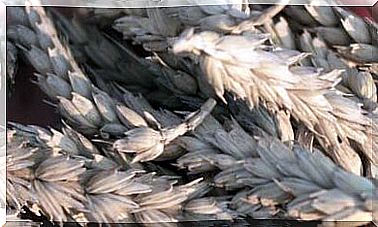Do You Pay Attention To Your Pelvic Floor?
The physiotherapist Silvia Soriano explains how by taking care of this “muscle hammock” we can avoid incontinence, prolapse and even back pain.

Silvia Soriano is a physiotherapist with a master’s degree in Osteopathy. Currently coordinating the master’s degree in Visceral Osteopathy at the Autonomous University of Barcelona and directing the Egara Osteopathy Clinic. As an expert on this often-forgotten muscle structure, she explains everything that is important to know in this interview.
The pelvic floor prevents incontinence and prolapse
-What is the pelvic floor?
–It is a set of muscular, facial and ligament structures that close the pelvis inferiorly as a ” muscular hammock “. It fulfills a function of sphincter and stabilization. It is divided into two planes: the deep one, which performs the visceral support, and the superficial one, in charge of continence or sphincter closure.
– What type of alterations usually affect it?
–The classic alterations are incontinence and prolapses.
Incontinence is the loss of control of the sphincters and is classified into different types: stress incontinence, linked to carrying out an effort such as sports, coughing or sneezing; emergency incontinence, given the urgent need to go to the bathroom and loss of urinary containment; and the mixed ones, where there is a mixture of both. There are also other kinds of incontinence, such as fecal or gas.
Prolapses are the dislocation or fall of the organs; usually from the bladder, uterus, and even rectum. It is due to a failure in the deep stabilizing musculature or in the fascial and ligament system that supports these organs.
What happens in the pelvic floor affects other muscle structures
–If the pelvic floor is not toned, how can it affect the rest of the muscular structures of the body?
–As the pelvic floor interacts with other structures that make up the bony pelvis (it inserts into the pubic bone, the ischial tuberosities, the coccyx and the sacrum) it can give rise to several alterations:
• In relation to the spinal column, any dysfunction generates lines of tension that are reproduced and transmitted throughout its muscles. In other words, any dysfunction in the lower mechanics translates into increasing mechanical stresses.
• In relation to the pelvitrochanteric muscles, it can affect the rotational mechanics of the hips.
• In relation to the deep abdominal muscles, due to working in conjunction with the transverse, oblique muscles, when the pelvic floor contracts, a contraction is also carried out in these structures.
• In relation to the partitions of the abdominal cavity (the perineum, the diaphragm, the lumbar muscles and the abdominal wall), with which it works in synergy, if there is a lack of stability or coordination in any of these partitions, another of they will be affected.
A pelvic floor problem affects the entire spine
–How far can alterations of the pelvic floor affect the spine?
–In addition to the musculoskeletal anatomical connection, a relationship is also established with ligamentous and aponeurotic structures of the spine. The posterior insertion ligament of the pelvic floor, the anococcygeal ligament, is related to the termination of the meninges, which line the spinal cord canal and extend into the cranial cavity. Thus, the lines of force and tensions are transmitted throughout the spinal column, causing tensions and asymmetries in its mechanics.
–How can a dysfunction in the pelvic floor influence the musculature of the hip?
–The insertion of the deep plane of the pelvic floor occurs in relation to the pelvitrochanteric muscles, such as the internal obturator. This means that a dysfunction, hypertonia or hypotonia can negatively influence the hip muscles. As well as descending and affecting the lower limb, causing mechanical adaptations. In conclusion, an alteration in the pelvic floor can generate ascending or descending lesion chains.
And vice versa … a whiplash affects the pelvic floor
–Can other injuries, such as whiplash, affect the pelvic floor?
“Of course you do, and the whiplash case is a very good example of that.” The mechanical traction for this trauma at the cervical level is transmitted to the other segments of the spine, including the lumbar, which is in direct relation to the posterior insertion of the pelvic floor. And it should be taken into account that transmission is not only through the muscular or ligamentous system, but also through the neuromeningeal system. Even alterations are generated in the central nervous and neurohormonal system.
What happens after a delivery or cesarean section
– What hurts the pelvic floor?
–In the first order, there is talk of obstetric trauma. For example, the use of forceps and other instruments to modify the baby’s position. Also episiotomies, which are small cuts in the perineum to increase the cavity and improve delivery at the time of delivery. In a caesarean section, the suprapubic incision that crosses the skin, musculature and peritoneum not only affects the abdominal wall but also affects another of the fasciae of the cavity. Even more so if the scar becomes fibrous. Weakness in this area translates into lumbar hypertonia or postural adaptations due to pain. These can cause rectification of the curvature of the spine, possibly leading to disc disease, such as herniated discs and protrusions. This has to be treated by developing elasticity and strengthening the muscles in the area where the incision was made. And it is done through physiotherapy and osteopathy techniques, and physical exercise.
– What do you recommend in these cases?
–Pregnancy is a physiological condition of the body, not a condition or pathology. Therefore, it is necessary to continue with normal daily life and carry out physical activities, avoiding those of impact. At a diagnostic level, I recommend checking the state of the pelvic floor before pregnancy, in case there are any problems that need to be addressed early and to apply therapeutic techniques that will later be unsuitable during pregnancy. During pregnancy, a control is carried out and at the end the postpartum assessment is carried out, which is very important: pelvic floor tonicity, muscle strength, hypertonia or hypotonia, if there is any tear or episiotomy, etc. are observed.
– What professionals carry out the assessment of the pelvic floor?
–The most common is an obstetrician gynecologist. However, it can be performed by an osteopathic physiotherapist. Of course, the ideal will be that the professional is specialized in the area. If you are an osteopath, it is important to make sure that you are based on a health profession, such as medicine, physiotherapy or nursing, and that you have then completed the master’s degree in Osteopathy, because then you will have the appropriate preparation, with the global knowledge of the system , which will allow you to make a complete diagnosis. This evaluative work is accompanied by a therapeutic one, in which the practice of yoga fits.
Yoga helps the pelvic floor
–How can yoga help?
–While in other practices it is usually a forgotten structure, in yoga there are postures that involve the conscious contraction of this musculature. This is very beneficial. It allows it to be integrated into our body scheme, something important for our nervous system to learn to perform its contraction and make it a participant in daily activities. But it is not a muscle that must be contracted steadily. They must be aware contractions, spontaneous and short (between 3 and 6 seconds).
That is why it is important to carry out a personalized assessment and adapt the practice taking into account whether there is hypertonia or hypotonia of the musculature, or another biomechanical characteristic. For example, if hypertonia is observed, the elasticity of this structure has to be worked on first. Whereas when addressing hypotonia, the goal is to strengthen it.
A PhysiomYoga Professional has the ideal training for the therapeutic approach of the pelvic floor.









